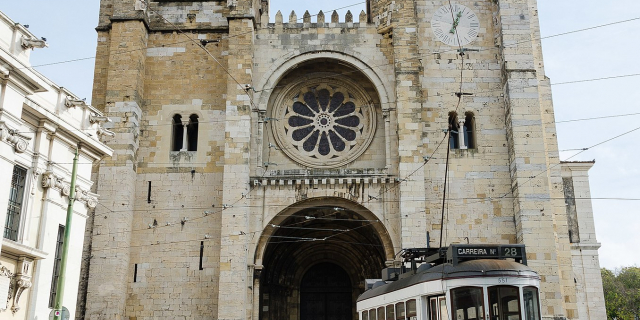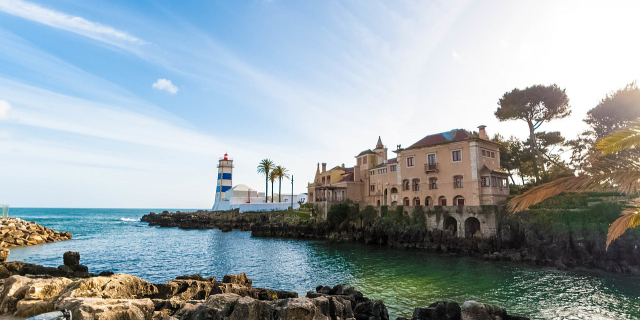The Jerónimos Monastery or Hieronymites Monastery (Portuguese: Mosteiro dos Jerónimos, IPA: [muʃˈtɐjɾu ðu(ʒ) ʒɨˈɾɔnimuʃ]) is a former monastery of the Order of Saint Jerome near the Tagus river in the parish of Belém, in the Lisbon Municipality, Portugal. It became the necropolis of the Portuguese royal dynasty of Aviz in the 16th century but was secularized on 28 December 1833 by state decree and its ownership transferred to the charitable institution, Real Casa Pia de Lisboa.
The Jerónimos Monastery is one of the most prominent examples of the late Portuguese Gothic Manueline style of architecture in Lisbon. It was erected in the early 1500s near the launch point of Vasco da Gama's first journey, and its construction funded by a tax on the profits of the yearly Portuguese India Armadas. In 1880, da Gama's remains and those of the poet Luís de...Read more
The Jerónimos Monastery or Hieronymites Monastery (Portuguese: Mosteiro dos Jerónimos, IPA: [muʃˈtɐjɾu ðu(ʒ) ʒɨˈɾɔnimuʃ]) is a former monastery of the Order of Saint Jerome near the Tagus river in the parish of Belém, in the Lisbon Municipality, Portugal. It became the necropolis of the Portuguese royal dynasty of Aviz in the 16th century but was secularized on 28 December 1833 by state decree and its ownership transferred to the charitable institution, Real Casa Pia de Lisboa.
The Jerónimos Monastery is one of the most prominent examples of the late Portuguese Gothic Manueline style of architecture in Lisbon. It was erected in the early 1500s near the launch point of Vasco da Gama's first journey, and its construction funded by a tax on the profits of the yearly Portuguese India Armadas. In 1880, da Gama's remains and those of the poet Luís de Camões (who celebrated da Gama's first voyage in his 1572 epic poem, The Lusiad), were moved to new carved tombs in the nave of the monastery's church, only a few meters away from the tombs of the kings Manuel I and John III, whom da Gama had served. In 1983, the Jerónimos Monastery was classified as a UNESCO World Heritage Site, along with the nearby Tower of Belém.
 The fountains in the Praça do Império, with symbols from the zodiac in the calçada
The fountains in the Praça do Império, with symbols from the zodiac in the calçada The entrance to the main church and cloister
The entrance to the main church and cloisterThe Jerónimos Monastery replaced the church formerly existing in the same place, which was dedicated to Santa Maria de Belém and where the monks of the military-religious Order of Christ provided assistance to seafarers in transit.[1] The harbour of Praia do Restelo was an advantageous spot for mariners, with a safe anchorage and protection from the winds, sought after by ships entering the mouth of the Tagus.[2] The existing structure was inaugurated on the orders of Manuel I (1469–1521) at the courts of Montemor o Velho in 1495, as a final resting-place for members of the House of Aviz, in his belief that an Iberian dynastic kingdom would rule after his death.[3] In 1496, King Manuel petitioned the Holy See for permission to construct a monastery at the site.[1] The Hermitage of Restelo (Ermida do Restelo), as the church was known, was already in disrepair when Vasco da Gama and his men spent the night in prayer there before departing on their expedition to India in 1497.[2][4]





































Add new comment